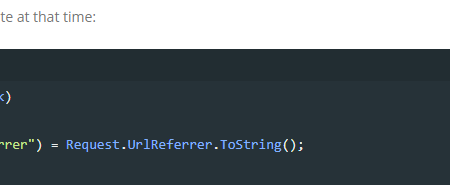A Comprehensive Guide to Clocks and Countdowns in CSS and JavaScript
Every second matters in the changing world of web development. Not just useful tools, clocks and countdowns also captivate users and provide information in an engaging and aesthetically appealing way. Understanding the art of clocks and countdowns in CSS and JavaScript is a crucial ability whether you want to construct a striking countdown for a product launch or an exquisite clock showing real-time statistics.
Your key to maximizing the possibilities of timing-based features in web design is this thorough guide. We will go deeply into the nuances of designing clocks and countdowns that fascinate and improve the user experience over the course of the coming chapters.
Understanding the Basics
Building a solid foundation is crucial in the field of web development before advancing to more advanced ideas. Understanding the fundamentals is essential for building clocks and countdowns in CSS and JavaScript. We’ll look at the core ideas supporting these time-based features in this chapter.
Clocks and Countdowns: What Are They?
Clocks and countdowns are time-displaying elements that serve various purposes on websites. Clocks typically show the current time, and countdowns display the remaining time until a specific event or deadline. These elements can be purely functional, such as displaying the time on a blog, or they can be visually engaging, like a countdown to a product launch.
The Role of CSS and JavaScript
CSS (Cascading Style Sheets) and JavaScript play crucial roles in creating clocks and countdowns:
- CSS handles the visual presentation. It allows you to define how your clocks and countdowns will look. You can set styles for fonts, colors, sizes, and even animations to make them visually appealing.
- JavaScript, on the other hand, provides the logic and interactivity. It allows you to create dynamic behavior, such as updating the time in real-time or triggering actions when a countdown reaches zero.
HTML Structure
Before we get into the coding details, it’s essential to understand the HTML structure that forms the foundation of clocks and countdowns. Typically, you’ll use HTML to create the structure of your time-based elements. For example, a simple clock might consist of an HTML structure like this:
<div class="clock">
<div class="hour"></div>
<div class="minute"></div>
<div class="second"></div>
</div>This HTML structure defines the clock’s components: hours, minutes, and seconds, each wrapped in their respective container divs.
Styling with CSS
CSS empowers you to style these HTML elements as you see fit. You can define colors, sizes, fonts, and positions. For example, to style a clock’s digits, you might use CSS like this:
.clock {
font-family: 'Arial', sans-serif;
font-size: 24px;
text-align: center;
}
.hour, .minute, .second {
display: inline-block;
padding: 0.5em;
background-color: #333;
color: #fff;
border-radius: 4px;
margin: 0 5px;
}This CSS code sets the font, size, alignment, and styles for the clock’s digits.
Next Steps
Now that you’ve grasped the basics of clocks and countdowns and how CSS and HTML play a pivotal role, you’re ready to move forward. In the following chapters, we’ll delve deeper into creating static and dynamic clocks, as well as countdowns. We’ll also explore JavaScript’s role in adding interactivity to these elements, bringing them to life on your web projects.
Stay tuned as we take you on a journey from the fundamentals to the more advanced aspects of crafting clocks and countdowns in CSS and JavaScript.
Creating Static Clocks
Static clocks are a great starting point when exploring clocks and countdowns in CSS and JavaScript. These clocks display the current time but do not update in real-time. In this chapter, you’ll learn how to create static clocks that serve as the foundation for more dynamic time-based elements.
HTML Structure for a Static Clock
Let’s begin by setting up the HTML structure for a simple static clock:
<div class="static-clock">
<div class="clock-face">
<div class="hour-hand"></div>
<div class="minute-hand"></div>
<div class="second-hand"></div>
</div>
</div>In this structure:
- The outer
<div>with the class"static-clock"acts as a container for the entire clock. - Inside, the
"clock-face"<div>serves as a canvas for the clock’s hands. - Within the clock face, we have three
<div>elements for the hour, minute, and second hands, each with their respective classes.
CSS Styling for the Static Clock
Now, let’s style our static clock using CSS. We’ll set up a basic analog clock with distinct hands:
.static-clock {
width: 200px;
height: 200px;
border: 2px solid #333;
border-radius: 50%;
position: relative;
}
.clock-face {
width: 100%;
height: 100%;
position: absolute;
}
.hour-hand, .minute-hand, .second-hand {
position: absolute;
transform-origin: center;
background-color: #333;
}
.hour-hand {
width: 4px;
height: 40px;
top: 30px;
}
.minute-hand {
width: 2px;
height: 60px;
top: 20px;
}
.second-hand {
width: 1px;
height: 70px;
top: 15px;
background-color: #ff0000; /* Red color for the second hand */
}In this CSS code:
- We style the
"static-clock"container with a circular shape and a border. - The
"clock-face"is set to take up the entire container. - Each hand (hour, minute, and second) is positioned absolutely within the clock face and given distinct lengths and widths.
JavaScript for Static Clocks
To make our static clock display the current time, we’ll need JavaScript. Here’s a basic script to update the clock hands’ rotation angles:
function updateClock() {
const now = new Date();
const hourDeg = (now.getHours() % 12) * 30 + (now.getMinutes() / 60) * 30;
const minuteDeg = now.getMinutes() * 6 + (now.getSeconds() / 60) * 6;
const secondDeg = now.getSeconds() * 6;
document.querySelector('.hour-hand').style.transform = `rotate(${hourDeg}deg)`;
document.querySelector('.minute-hand').style.transform = `rotate(${minuteDeg}deg)`;
document.querySelector('.second-hand').style.transform = `rotate(${secondDeg}deg)`;
}
// Call the updateClock function to initially set the clock's hands.
updateClock();
// Update the clock every second.
setInterval(updateClock, 1000);This JavaScript code:
- Calculates the current angles for the hour, minute, and second hands based on the current time.
- Updates the rotation of each hand accordingly.
With this setup, your static clock will display the current time and update every second, giving the illusion of a ticking clock.
Understanding clocks and countdowns in CSS and JavaScript begins with creating static clocks. You now know how to organize HTML, style it using CSS, and incorporate interaction with JavaScript. The following chapters will examine more complex clock designs and countdowns now that you have a strong foundation. Keep reading as we go further into the realm of web time.
Dynamic Countdowns
Dynamic countdowns are not only visually engaging but also serve practical purposes, such as creating anticipation for events or product launches. In this chapter, you’ll explore how to design and implement dynamic countdowns using CSS and JavaScript.
HTML Structure for a Countdown
To start, let’s set up the HTML structure for a basic dynamic countdown:
<div class="countdown">
<div class="countdown-timer">
<span class="countdown-days">00</span>
<span class="countdown-hours">00</span>
<span class="countdown-minutes">00</span>
<span class="countdown-seconds">00</span>
</div>
</div>In this structure:
- The outer
<div>with the class"countdown"acts as the container for the countdown. - Inside, the
"countdown-timer"<div>holds the countdown elements (days, hours, minutes, and seconds) as individual<span>elements.
CSS Styling for the Countdown
Now, let’s style the countdown using CSS to give it a visually appealing look:
.countdown {
text-align: center;
font-family: Arial, sans-serif;
font-size: 24px;
}
.countdown-timer {
display: flex;
justify-content: center;
align-items: center;
background-color: #333;
color: #fff;
padding: 10px;
border-radius: 5px;
}
.countdown-timer span {
margin: 0 10px;
padding: 5px;
background-color: #111;
border-radius: 4px;
}In this CSS code:
- We style the
"countdown"container to center its content and set the font properties. - The
"countdown-timer"is styled to create a visually distinct timer display with a dark background and white text. - Each
<span>within the countdown timer is styled with margin, padding, and background properties to create a cohesive design.
JavaScript Logic for the Countdown
Now, let’s add JavaScript logic to create a dynamic countdown:
function updateCountdown() {
const targetDate = new Date("2023-12-31T00:00:00"); // Replace with your target date and time
const currentDate = new Date();
const timeDifference = targetDate - currentDate;
if (timeDifference <= 0) {
// The countdown has ended
document.querySelector('.countdown-timer').innerHTML = '<span>Countdown Ended!</span>';
} else {
const days = Math.floor(timeDifference / (1000 * 60 * 60 * 24));
const hours = Math.floor((timeDifference % (1000 * 60 * 60 * 24)) / (1000 * 60 * 60));
const minutes = Math.floor((timeDifference % (1000 * 60 * 60)) / (1000 * 60));
const seconds = Math.floor((timeDifference % (1000 * 60)) / 1000);
document.querySelector('.countdown-days').textContent = String(days).padStart(2, '0');
document.querySelector('.countdown-hours').textContent = String(hours).padStart(2, '0');
document.querySelector('.countdown-minutes').textContent = String(minutes).padStart(2, '0');
document.querySelector('.countdown-seconds').textContent = String(seconds).padStart(2, '0');
}
}
// Call the updateCountdown function to initially set the countdown.
updateCountdown();
// Update the countdown every second.
setInterval(updateCountdown, 1000);In this JavaScript code:
- We calculate the time difference between the target date (e.g., December 31, 2023) and the current date.
- If the countdown has ended, we display a “Countdown Ended!” message.
- Otherwise, we calculate and update the days, hours, minutes, and seconds remaining.
With this setup, your dynamic countdown will continuously update, counting down to the specified target date.
Dynamic countdowns add an element of excitement and anticipation to websites. In this chapter, you’ve learned how to create a basic dynamic countdown using HTML, style it with CSS, and add functionality with JavaScript. You can now apply these principles to various countdown scenarios, from product launches to event promotions. Stay tuned as we explore more advanced techniques and features in upcoming chapters.
Real-time Clocks
Real-time clocks are essential when you want to display the current time, continuously updating as time passes. In this chapter, you’ll explore how to create real-time clocks using CSS and JavaScript, and also consider time zone considerations.
HTML Structure for a Real-time Clock
Let’s begin by setting up the HTML structure for a basic real-time clock:
<div class="real-time-clock">
<div class="clock-face">
<div class="hour-hand"></div>
<div class="minute-hand"></div>
<div class="second-hand"></div>
</div>
</div>This HTML structure is similar to the one used for the static clock, with an outer container "real-time-clock" and inner elements for the clock’s hands.
CSS Styling for the Real-time Clock
The CSS for a real-time clock is quite similar to that of a static clock. You can use the same styling principles to create a visually appealing clock:
.real-time-clock {
width: 200px;
height: 200px;
border: 2px solid #333;
border-radius: 50%;
position: relative;
}
.clock-face {
width: 100%;
height: 100%;
position: absolute;
}
.hour-hand, .minute-hand, .second-hand {
position: absolute;
transform-origin: center;
background-color: #333;
}
.hour-hand {
width: 4px;
height: 40px;
top: 30px;
}
.minute-hand {
width: 2px;
height: 60px;
top: 20px;
}
.second-hand {
width: 1px;
height: 70px;
top: 15px;
background-color: #ff0000; /* Red color for the second hand */
}This CSS code defines the visual style of the real-time clock.
JavaScript Logic for Real-time Clocks
To create a real-time clock, you’ll need JavaScript to continuously update the clock hands. Here’s a script to achieve that:
function updateRealTimeClock() {
const now = new Date();
const hourDeg = (now.getHours() % 12) * 30 + (now.getMinutes() / 60) * 30;
const minuteDeg = now.getMinutes() * 6 + (now.getSeconds() / 60) * 6;
const secondDeg = now.getSeconds() * 6;
document.querySelector('.hour-hand').style.transform = `rotate(${hourDeg}deg)`;
document.querySelector('.minute-hand').style.transform = `rotate(${minuteDeg}deg)`;
document.querySelector('.second-hand').style.transform = `rotate(${secondDeg}deg)`;
}
// Call the updateRealTimeClock function to initially set the clock's hands.
updateRealTimeClock();
// Update the clock every second.
setInterval(updateRealTimeClock, 1000);This JavaScript code is similar to the one used for the static clock but continuously updates the clock hands every second based on the current time.
Time Zone Considerations
When displaying real-time clocks, it’s important to consider time zones, especially if your website serves a global audience. You can achieve this by using JavaScript’s Date object and its getTimezoneOffset() method to adjust the displayed time based on the user’s time zone. Implementing time zone support adds a layer of user-friendliness to your real-time clocks.
Real-time clocks are a useful addition to websites because they give visitors up-to-date time information that is correct. You’ve learned how to use HTML to build a real-time clock, design it using CSS, and give it functionality with JavaScript in this chapter. You have also taken into account the significance of time zones while showing real-time information. You now possess the knowledge and abilities to integrate real-time clocks into your online applications, improving user experience and dynamically giving useful information. Keep an eye out for the chapters that follow for more sophisticated clock features and personalization choices.
Styling Tips and Tricks
When it comes to clocks and countdowns in CSS and JavaScript, the visual presentation is crucial. In this chapter, we’ll explore various styling tips and tricks to make your time-based elements visually appealing and engaging.
1. Use CSS Animations:
CSS animations can breathe life into your clocks and countdowns. Consider adding subtle animations to clock hands or countdown numbers. For example, you can create a smooth transition when the second’s hand moves or make countdown numbers fade in when the page loads.
.second-hand {
animation: rotate 60s linear infinite;
}
@keyframes rotate {
0% {
transform: rotate(0deg);
}
100% {
transform: rotate(360deg);
}
}2. Custom Fonts and Colors:
Choose fonts and colors that match your website’s theme and brand. Customizing fonts and color schemes can give your clocks and countdowns a unique look. Consider using web fonts to achieve a distinctive style.
.countdown-timer {
font-family: 'Roboto', sans-serif;
background-color: #E91E63;
color: #fff;
}3. Responsive Design:
Ensure your clocks and countdowns look great on various screen sizes. Use CSS media queries to adjust the size and layout of your time-based elements for mobile and desktop users. Responsive design is crucial for a seamless user experience.
@media screen and (max-width: 768px) {
.countdown-timer {
font-size: 18px;
}
}4. Themes and Skins:
Consider offering different themes or skins for your clocks and countdowns. Allow users to choose between light and dark themes or provide options for holiday-themed designs. Adding theme customization can make your elements more appealing.
5. Transparency and Opacity:
Experiment with transparency and opacity to create interesting visual effects. You can make clock hands partially transparent or use opacity to reveal countdown numbers gradually. These effects can add depth and sophistication to your designs.
.hour-hand, .minute-hand {
opacity: 0.8;
}6. 3D Transformations:
Use CSS 3D transformations to create stunning effects. For example, you can make clock hands appear as if they’re coming out of the clock face. These transformations can add a layer of realism to your time-based elements.
.clock-face {
transform-style: preserve-3d;
}7. Gradient Backgrounds:
Consider using gradient backgrounds for your countdown containers. Gradients can create visually appealing and modern designs. You can experiment with linear or radial gradients to achieve different effects.
.countdown {
background: linear-gradient(to right, #FF5722, #FFC107);
}8. Hover Effects:
Add interactive hover effects to engage users. For instance, you can make clock hands change color or size when users hover over them. These subtle interactions can make your elements more captivating.
.second-hand:hover {
transform: scale(1.2);
background-color: #FF5722;
}9. Icon Integration:
Incorporate icons or symbols that relate to the purpose of your countdown or clock. Icons can quickly convey information and enhance the overall design.
<span class="icon">????</span>
.icon {
font-size: 24px;
margin-right: 10px;
}10. User-Generated Content:
Encourage users to share their own clock and countdown designs. User-generated content can bring diversity to your website and showcase different creative approaches to time-based elements.
By implementing these styling tips and tricks, you can transform your clocks and countdowns into visually appealing and engaging elements that enhance user experience and contribute to the overall aesthetics of your website.
Advanced Techniques
Now that you’ve mastered the basics of clocks and countdowns in CSS and JavaScript, it’s time to explore advanced techniques that will take your time-based elements to the next level. In this chapter, we’ll delve into more sophisticated approaches and functionalities.
1. Multiple Time Zones:
If your website serves a global audience, consider implementing clocks with multiple time zones. Allow users to select their preferred time zone, and display the current time for different locations around the world. You can use JavaScript libraries like moment-timezone to simplify time zone conversions.
2. Countdown Variations:
Experiment with different countdown variations. Create countdowns that display not only days, hours, minutes, and seconds but also milliseconds or custom units. Additionally, explore countdowns with unique formats, such as counting up from a specific date.
3. Countdown Events:
Enhance your countdowns by triggering events when they reach zero. For example, automatically redirect users to a specific page when a countdown ends, or display a celebratory message. JavaScript’s setTimeout() function can be useful for scheduling actions.
4. Countdown Animations:
Take advantage of CSS animations and transitions to add dynamic effects to your countdowns. Animate countdown numbers as they change or create countdowns with rotating or flipping animations for added visual impact.
5. Real-time Data Integration:
Incorporate real-time data into your clocks and countdowns. For instance, display live stock market prices, weather updates, or sports scores alongside the time. JavaScript frameworks like React or Vue.js can be useful for building dynamic interfaces that combine time-based elements with real-time data.
6. Interactive Time Zones:
Allow users to interact with time zones directly on your website. Create a time zone picker that lets users switch between different regions and see the corresponding time on a world map. JavaScript libraries like moment-timezone and mapping libraries like Leaflet can be helpful for this purpose.
7. Countdown Customization:
Offer customization options for your countdowns. Allow users to choose different themes, colors, or styles for their countdowns. Provide a user-friendly interface that enables them to personalize their countdowns to match their preferences.
8. Countdown Progress Bars:
Integrate progress bars into your countdowns to visually represent the time remaining. Progress bars can be an effective way to convey the urgency of an event or deadline. You can create these bars using HTML and CSS, updating them dynamically with JavaScript.
9. Mobile Optimization:
Optimize your clocks and countdowns for mobile devices. Implement responsive design techniques to ensure that your time-based elements look and function well on smartphones and tablets. Test your designs on various mobile browsers to ensure compatibility.
10. Accessibility Considerations:
Ensure that your clocks and countdowns are accessible to all users, including those with disabilities. Use semantic HTML elements, provide alternative text for visuals, and implement keyboard navigation and screen reader compatibility. Accessibility is essential for inclusive web design.
By incorporating these advanced techniques into your clocks and countdowns, you can create interactive and visually stunning time-based elements that not only serve practical purposes but also elevate the user experience on your website. Experiment with these ideas to craft unique and engaging time-related features that set your web projects apart.
Optimizing Performance
Optimizing the performance of your clocks and countdowns in CSS and JavaScript is crucial to ensure that they run smoothly and efficiently. In this chapter, we’ll explore best practices and techniques for improving the performance of your time-based elements.
1. Minimize DOM Manipulation:
Excessive DOM manipulation can slow down your clocks and countdowns. Reduce the number of DOM updates by caching references to frequently accessed elements and only making updates when necessary.
const countdownTimer = document.querySelector('.countdown-timer');
const daysElement = document.querySelector('.countdown-days');
const hoursElement = document.querySelector('.countdown-hours');
const minutesElement = document.querySelector('.countdown-minutes');
const secondsElement = document.querySelector('.countdown-seconds');
function updateCountdown() {
// Use cached references instead of repeatedly querying the DOM.
// ...
}2. Efficient CSS Animations:
While CSS animations can enhance the visual appeal of your elements, excessive animations can strain the browser’s rendering engine. Use animations sparingly and consider optimizing them for performance, especially on mobile devices.
3. RequestAnimationFrame:
For smoother animations, use the requestAnimationFrame method in JavaScript. It synchronizes animations with the browser’s repaint cycle, leading to better performance and reduced CPU usage.
function animateClock() {
// Perform animations using requestAnimationFrame.
// ...
// Request the next animation frame.
requestAnimationFrame(animateClock);
}
// Start the animation loop.
requestAnimationFrame(animateClock);4. Debouncing and Throttling:
If your clocks or countdowns need to update frequently (e.g., every millisecond), consider implementing debouncing or throttling mechanisms to limit the rate of updates. This can prevent excessive rendering and improve overall performance.
5. Use CSS Transforms:
When rotating clock hands or elements, use CSS transforms (transform: rotate()) instead of changing element properties like top and left. Transforms are optimized for performance and provide smoother animations.
.second-hand {
transform-origin: center;
}
.second-hand {
transform: rotate(180deg); /* Rotate by 180 degrees */
}6. Optimize Images:
If your clocks or countdowns use background images or icons, ensure that these assets are properly optimized for the web. Compress images and use modern image formats (e.g., WebP) to reduce loading times.
7. Lazy Loading:
Consider lazy loading your time-based elements, especially if you have multiple clocks or countdowns on a single page. Load them only when they come into the user’s viewport, reducing initial page load times.
8. Caching:
Cache time-based data whenever possible. If your clocks or countdowns rely on external data sources (e.g., APIs for time zones or event dates), cache this data to minimize repeated requests and reduce server load.
9. Reduce Polling Frequency:
If your clocks or countdowns depend on real-time data updates, such as stock prices or weather conditions, be mindful of the polling frequency. Frequent data requests can impact server performance and increase page load times.
10. Testing and Profiling:
Regularly test and profile your clocks and countdowns using browser developer tools. Identify performance bottlenecks and address them promptly. Tools like the Chrome DevTools Performance panel can help pinpoint issues.
By implementing these performance optimization techniques, you can ensure that your clocks and countdowns run smoothly and efficiently, providing a seamless user experience without causing unnecessary strain on the user’s device or the server.
Cross-browser Compatibility
Ensuring that your clocks and countdowns work consistently across different web browsers is essential for a seamless user experience. In this chapter, we’ll explore strategies and best practices for achieving cross-browser compatibility in CSS and JavaScript.
1. Test on Multiple Browsers:
Before deploying your clocks and countdowns, test them on various web browsers, including popular options like Google Chrome, Mozilla Firefox, Apple Safari, Microsoft Edge, and Internet Explorer (if needed). This step helps identify any browser-specific issues.
2. Normalize CSS:
Consider using a CSS normalization library like “normalize.css” or “reset.css” to establish a consistent baseline for styles across browsers. This helps mitigate differences in default browser styles and ensures a more predictable rendering.
<link rel="stylesheet" href="normalize.css">
3. Use Browser Prefixes:
When using CSS properties that may not be fully supported by all browsers, add vendor prefixes (-webkit, -moz, -ms, -o) to cover a wider range of browsers. CSS autoprefixer tools can help automate this process.
.element {
-webkit-transform: translateX(50%);
-moz-transform: translateX(50%);
transform: translateX(50%);
}4. Feature Detection:
Leverage feature detection in JavaScript to determine if a browser supports a specific feature or API. This allows you to provide fallbacks or alternative behavior for unsupported browsers.
if ('IntersectionObserver' in window) {
// Use IntersectionObserver for lazy loading (supported).
} else {
// Implement an alternative lazy loading strategy.
}5. Polyfills:
Consider using polyfills for JavaScript features that are not supported in older browsers. Polyfills are scripts that add support for modern features to older browsers. Libraries like “Modernizr” can help you detect and apply polyfills as needed.
<script src="modernizr.js"></script>
6. Responsive Design:
Ensure that your clocks and countdowns are responsive and adapt well to different screen sizes and resolutions. Use media queries and flexible layouts to accommodate various devices and browsers.
@media screen and (max-width: 768px) {
.countdown {
font-size: 18px;
}
}7. Cross-browser Testing Tools:
Use online cross-browser testing tools and services to evaluate your clocks and countdowns across a wide range of browsers and versions. These tools can help identify issues quickly and efficiently.
8. User-Agent Sniffing (with Caution):
While not recommended as a primary solution, user-agent sniffing can be used sparingly as a last resort to provide specific browser-specific fixes or workarounds. However, it’s important to be cautious with this approach, as user agents can be spoofed or unreliable.
if (navigator.userAgent.includes('MSIE')) {
// Apply IE-specific fixes.
}9. Keep Documentation and Changelogs:
Maintain detailed documentation and changelogs for your clocks and countdowns. Note any browser-specific issues and solutions encountered during development and testing. This information can be valuable for future updates and bug fixes.
10. Stay Updated:
Regularly check for updates to browsers, CSS specifications, and JavaScript standards. Keeping your knowledge up-to-date ensures that you’re aware of new features and potential changes in browser behavior.
Achieving cross-browser compatibility for your clocks and countdowns may require additional effort, but it’s essential for providing a consistent and reliable user experience. By following these strategies and best practices, you can minimize compatibility issues and ensure that your time-based elements work seamlessly across different browsers.
Accessibility and User Experience
Creating accessible and user-friendly clocks and countdowns is crucial to ensure that all users, regardless of their abilities, can interact with and understand your time-based elements. In this chapter, we’ll explore how to enhance accessibility and user experience in CSS and JavaScript.
1. Semantic HTML:
Use semantic HTML elements to structure your clocks and countdowns. For example, use <time> elements to represent time-related content and <div> or <span> elements for styling and layout.
<time datetime="2023-12-31T00:00:00">December 31, 2023</time>
2. Alternative Text:
Provide alternative text for visual elements, such as clock hands or countdown icons. This ensures that users with visual impairments using screen readers can understand the purpose of these elements.
<img src="clock-hand.png" alt="Clock hand pointing to 3 o'clock">
3. ARIA Roles and Attributes:
Use ARIA (Accessible Rich Internet Applications) roles and attributes to enhance the accessibility of your time-based elements. For example, you can use aria-live to announce updates in real-time countdowns to screen reader users.
<div class="countdown" aria-live="assertive">
<!-- Countdown content here -->
</div>4. Keyboard Navigation:
Ensure that your clocks and countdowns are keyboard accessible. Users should be able to interact with and navigate your elements using keyboard inputs. Test tab order, focus styles, and keyboard interactions.
.countdown:focus {
/* Apply a visible focus style. */
outline: 2px solid #0078d4;
}5. High Contrast and Readability:
Maintain high contrast between text and background colors to improve readability. Avoid using color alone to convey information, as some users may have color vision deficiencies.
.countdown {
color: #fff;
background-color: #333;
}6. Responsive Design:
Ensure that your clocks and countdowns are responsive and adapt well to different screen sizes and orientations. Test their usability on mobile devices, tablets, and desktops.
7. Test with Screen Readers:
Regularly test your clocks and countdowns with screen reader software like JAWS, NVDA, or VoiceOver. Verify that all content is accessible and that dynamic updates are announced correctly.
8. Focus Management:
Manage focus when updating countdowns or displaying dynamic content. Use JavaScript to shift focus to the updated element so that screen reader users are aware of changes.
9. Error Handling:
Implement error handling for unexpected scenarios. For example, if your countdown relies on external data, provide appropriate error messages or fallback content when data cannot be loaded.
<div class="countdown-error">
Unable to load countdown data. Please try again later.
</div>10. User Testing:
Engage users with disabilities in user testing and gather feedback on the accessibility and usability of your clocks and countdowns. Incorporating their input can lead to valuable improvements.
11. Document Accessibility Features:
Document the accessibility features of your clocks and countdowns, including keyboard shortcuts, ARIA roles, and alternative text. Make this information available to users in an accessible format.
12. WCAG Compliance:
Strive for compliance with the Web Content Accessibility Guidelines (WCAG). Aim for at least Level AA compliance, which is considered the standard for accessible web content.
By prioritizing accessibility and user experience in your clocks and countdowns, you can ensure that your time-based elements are inclusive and usable by a wide range of users, enhancing the overall quality of your website.
Practical Examples and Projects
In this final chapter, let’s explore some practical examples and projects that you can create using clocks and countdowns in CSS and JavaScript. These projects can be a great way to apply your knowledge and enhance your web development skills.
1. Event Countdown:
Create a dynamic event countdown for a website. Allow users to set the date and time of an upcoming event, and then display a countdown timer that counts down to that event. You can include features like custom messages or animations when the event starts.
2. World Clock:
Build a world clock that displays the current time in various cities around the world. Users can select different time zones to view the time in different regions. Consider adding interactive features like a world map or a time zone converter.
3. Pomodoro Timer:
Develop a Pomodoro timer application that helps users manage their work and break intervals. Users can set the work and break durations, and the timer alternates between these intervals. Include audio alerts or visual cues to notify users when it’s time to switch.
4. Countdown Landing Page:
Design a landing page for an upcoming product launch or event. Use a visually appealing countdown to create excitement and anticipation. Add social sharing buttons to encourage users to share the event with others.
5. Animated Clock:
Create an animated clock with unique visual effects. Experiment with different styles, such as a minimalist design with smooth transitions or a steampunk-inspired clock with intricate animations.
6. Time-based Quiz Game:
Develop a quiz game where questions are presented with a time limit. Users must answer questions within a specified time frame, and the game keeps track of their score. Add animations and sound effects to make it engaging.
7. Task Scheduler:
Build a task scheduler that allows users to create and manage tasks with deadlines. Display countdowns for approaching deadlines and provide notifications or reminders.
8. Real-time Weather Dashboard:
Design a weather dashboard that not only shows current weather conditions but also includes dynamic elements like animated weather icons and real-time weather updates. Use countdowns to display weather forecasts or sunrise/sunset times.
9. Dynamic Stock Market Ticker:
Create a stock market ticker that displays real-time stock prices and updates. Use CSS animations to make the ticker scroll smoothly, and include countdowns for time-based stock data, such as daily trading hours.
10. Animated Countdown Banner:
Design an animated countdown banner that can be easily integrated into websites or promotional materials. Customize it for special occasions like holidays, sales events, or product launches.
11. Educational Timer:
Build an educational timer that helps users manage their study or work sessions. Allow users to customize the timer’s duration and provide statistics on their productivity.
12. Conference Scheduler:
Develop a conference scheduler that displays session times and countdowns for a virtual or in-person conference. Include features like session details, speaker bios, and interactive maps.
These practical examples and projects not only allow you to apply your skills but also offer opportunities to explore creative and functional aspects of clocks and countdowns in web development. Whether you’re building a simple event countdown or a complex interactive application, these projects can help you expand your portfolio and provide valuable features to users.
Future Trends and Innovations
As technology continues to advance, web development and design trends related to clocks and countdowns are also evolving. Here are some future trends and innovations to watch for:
1.Real-time Collaboration Tools: In an increasingly remote and collaborative work environment, real-time clocks and countdowns integrated into project management and collaboration tools will become more common. These tools will help teams coordinate tasks, set deadlines, and track progress collectively.
2.Voice-Activated Countdowns: With the growing popularity of voice assistants like Siri, Google Assistant, and Alexa, we can expect to see voice-activated countdowns. Users will be able to set, modify, and check the status of timers using voice commands, making them more accessible and convenient.
3.Contextual Countdowns: Countdowns that consider contextual information will become smarter. For example, an event countdown may adjust its timing based on a user’s location, travel time, or real-time traffic data to provide more accurate estimates.
4.AI-Enhanced Countdowns: Artificial intelligence will play a significant role in countdowns. AI algorithms can predict estimated times of arrival, completion, or delivery with greater accuracy, helping users plan their activities more efficiently.
5.Virtual and Augmented Reality Countdowns: VR and AR technologies will offer immersive countdown experiences. Users might interact with virtual countdown clocks in virtual worlds or use AR to display timers and reminders in their physical environments.
6.Biometric Countdowns: Future countdowns may incorporate biometric data, such as heart rate or stress levels, to tailor countdown experiences. For instance, a meditation app could adjust the length of a meditation session based on the user’s stress level.
7.Blockchain Timestamps for Authentication: To ensure the authenticity and integrity of time-related data, blockchain technology will be used to timestamp events and transactions. This can be particularly important in applications like legal contracts and supply chain management.
8.Dark Mode and Theme Customization: Users will expect clocks and countdowns to adapt to their preferred color schemes and themes, including dark mode. Customization options will become more extensive, allowing users to personalize the visual style of countdowns.
9.Cross-Platform Compatibility: As users interact with clocks and countdowns on various devices and platforms, ensuring consistent user experiences across web, mobile, desktop, and wearable devices will be crucial.
10.Interactive Countdown Marketing: Marketers will increasingly use interactive countdowns in promotional campaigns. These countdowns might offer discounts, promotions, or exclusive access to products or content when a timer expires, creating a sense of urgency.
11.Time-Tracking Tools: Advanced time-tracking tools will emerge, providing users with detailed insights into how they spend their time. These tools may include interactive visualizations, reports, and recommendations for time management.
12.Energy-Efficient Countdowns: As sustainability becomes a top priority, energy-efficient designs will play a role in countdown development. Minimizing the impact of animations and real-time updates on device batteries will be important.
13.Data Privacy and Security: With the increasing reliance on real-time data and timers in various applications, protecting user data and ensuring secure time tracking will be critical to maintain trust.
14.Holistic User Experience: Countdowns will be integrated into a holistic user experience, seamlessly blending into applications and websites to assist users in managing their time and tasks more effectively.
As these future trends and innovations unfold, web developers and designers will have exciting opportunities to create innovative and user-centric clocks and countdowns that enhance productivity, engagement, and overall digital experiences. Stay curious, adapt to emerging technologies, and continue pushing the boundaries of what is possible in the world of time-based web elements.
Conclusion
You’ve traveled from the fundamentals of building static clocks to advanced techniques, optimizing performance, ensuring cross-browser compatibility, enhancing accessibility, and imagining future trends and innovations in this thorough guide to clocks and countdowns in CSS and JavaScript. You now possess the knowledge and abilities necessary to produce dynamic and aesthetically attractive time-based features for your online projects.
More than just practical elements, clocks and countdowns are effective tools for capturing users’ attention, communicating important information, and building memorable experiences. The guidelines and methods discussed in this manual offer a strong basis for realizing your ideas, whether you’re creating a straightforward event countdown, an interactive clock, or a complex scheduling application.
Remember that web development is an ever-evolving field, and staying current with the latest technologies and design trends is essential. Continue to explore, experiment, and push the boundaries of what’s possible with clocks and countdowns to create unique and compelling user experiences on the web.
As you embark on your web development journey, may your clocks always be accurate, your countdowns always build anticipation, and your projects continually inspire and delight users. Happy coding!











Leave a Reply